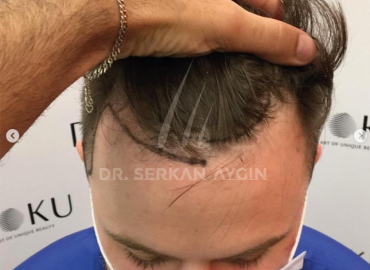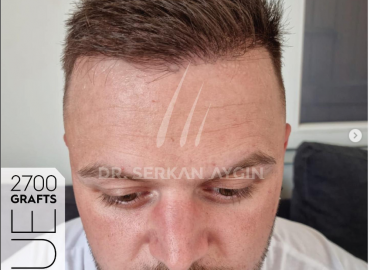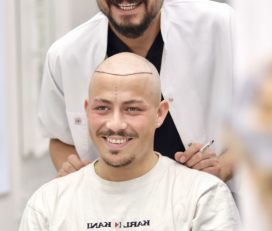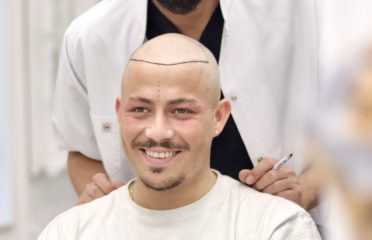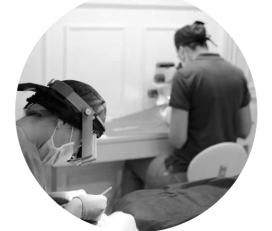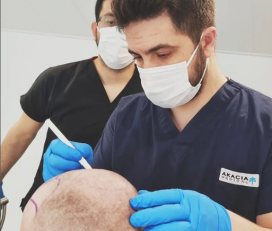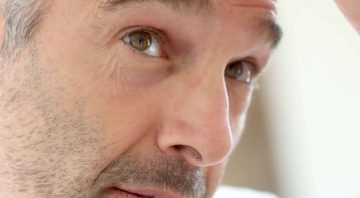

Dr Serkan Aygin Clinic Istanbul
About clinic:
FUE:
Follicular unit extraction (FUE), a modern and more advanced technique, was developed in 2000 as an alternative to FUT. This outpatient procedure is painless and does not disrupt the patient’s day.
FUE Procedure:
Steps:
- To cover bald spots, the hair transplant surgeon will draw a natural-looking line.
- The patient is given local anesthesia to numb both the recipient and donor areas. Soft sedation can also be used to alleviate any discomfort.
- The area where the hair was extracted is trimmed to about two millimeters.
- Individually harvested grafts from the donor area are done using micro-motors and micro-punches. The diameter of the grafts varies from 0,7 (1 root), to 0,8 (2 roots), or 1,0 mm (3+ root).
- The surgeon will create micro-channels to implant the extracted skin grafts in the slit method. He or she will make holes at the same angle as the patient’s hair so that the fair follicle tissue can be placed inside.
- The grafts are inserted at 40-45 degrees into a patient’s scalp.
The FUE Hair Transplant procedure is considered the gold standard for hair transplants. It is minimally invasive and causes the least damage to the tissue by adapting micro-blades to the size of the hairy tissues.
FAQs
Can a hair transplant fail?
If the patient is healthy, follows all pre- and post-operative instructions, and chooses the best hair transplant method, the percentage of hair transplants that fail can be considered low. A professional team and an experienced doctor can perform a hair transplant procedure that will look natural.
Proper planning is key to achieving good results with hair transplantation. Correct planning is the ability to determine the hairline in harmony with the patient's facial features. The outcome of the procedure will also depend on the quality of the donor hair and the density of the patient's hair. Hair transplantation can look unnatural or pluggy in the early years of practice. Today, hair transplantation can be done with DHI and Soft FUE techniques. Both are the most advanced methods of hair transplantation.
These are the reasons hair transplants fail:
Mishandling Grafts
The most important part of hair transplants is having enough grafts available to transfer from one area to another. We at Dr. Serkan Aygin Clinic make every effort to minimize risks and get the best results from each transplanted and harvested hair graft. One of the leading causes of hair transplant failure is mishandling grafts. They may also succumb to shock or trauma following the procedure. You must also place hair grafts correctly. This requires special skills that can take a while to master.
You are not a good candidate for hair transplantation
A hair transplant that isn't performed on a qualified candidate could lead to a failure of your transplant. A clinic that doesn't assess your hair loss and predict future hair loss could give you a poor hair transplant.
Can hair transplant thicken hair?
Yes. Most patients who have had hair transplantation will notice a decrease in hair thickness within the first three months. Then, hair will gradually grow back thicker and more fuller. A hair transplant procedure results in permanently thicker hair, provided that there is no further hair loss. Hair transplants are minimally invasive and pose little risk. They will increase your hair's volume, as well as give you a younger appearance in just one year. The final results should be visible within 12-18 months after your procedure.
Can your body reject a hair transplant?
Some cases of poor hair transplant yield can be attributed to patient physiology. This is rare and difficult to differentiate from human error.
International studies have shown that hair transplants that are rejected by the body due to an external error can be caused by post-transplant Lichen Planopilaris.
LPP is an inflammatory scalp condition that causes patchy alopecia.
These percentages are theoretical and low, fortunately. This makes it unlikely that something like this will happen. Hair transplantation can be done safely and successfully by a qualified hair transplant doctor and his medical team. The likelihood of a body developing a condition that would "reject" a hair transplantation is very low.
Do hair transplants last forever?
Grafts that are removed from the area of the head where they are genetically programmed to not fall out can last forever if done by the right surgeon. A hair transplant can last a lifetime if it is done by an experienced, trained hair restoration specialist. Hair transplant surgery uses healthy hair follicles to transplant them to the areas that are thinning or bald. Hereditary baldness means that your hair will always be the same as it was when it was taken. Hair transplant surgery is the only permanent treatment for hair loss.
The transplanted hair follicles will be accepted by the scalp because they are taken from an area that is not susceptible to hair loss. This will result in a natural growth of hair. The new hair will have the same characteristics as the surrounding hair. The grafts are usually removed from the back of the patient's skull by surgeons. Because the hair follicles at the back of our heads are resistant to hair loss, this is why surgeons prefer to extract the grafts from the back. This is why transplants to patients don't cause them to lose their genetic ability. The risk of hair loss is higher for those with male/female-pattern baldness. In most cases, however, patients with male/female pattern baldness are able to resolve the problem by having a second or third procedure to restore their hair density. However, this doesn't alter the original transplanted hair. These problems aside, transplanted hair is guaranteed to last a lifetime, no matter what.
Is hair transplantation permanent?
Individuals suffering from hair loss can have their hair transplant done. This is a permanent and effective solution. A hair transplant is a permanent solution for individuals suffering from hair loss. The hair follicles that will be transplanted are taken from areas that are resistant to balding. This is known as the "safe donor area".
The term "safe donor area" refers to an area where there is no risk of permanent hair loss. It is important to understand the logic behind the "safe donor area" concept. This theory was developed by Norman Orentreich in 1952. Orentriech stated that transplanted scalp tissue was producing hairs that were healthy in an area that couldn't grow hair anymore, so he believed that the physical characteristics of the hair follicles from that donor zone were more important than the physical traits found in the original scalp tissue.
This means that hair follicles from these areas will show the same bald-resistant characteristics and will not fall out when transplanted to the desired coverage.
It is important to remember that a hair transplant will not stop hair loss and hair thinning. Before patients are eligible for hair transplantation, they should be able to maintain a steady rate of hair loss.
Patients may request a second or third session for one of several reasons. If the areas to be covered are too large, it will take longer to complete the operation. This will put more strain on both the doctor and his team.


